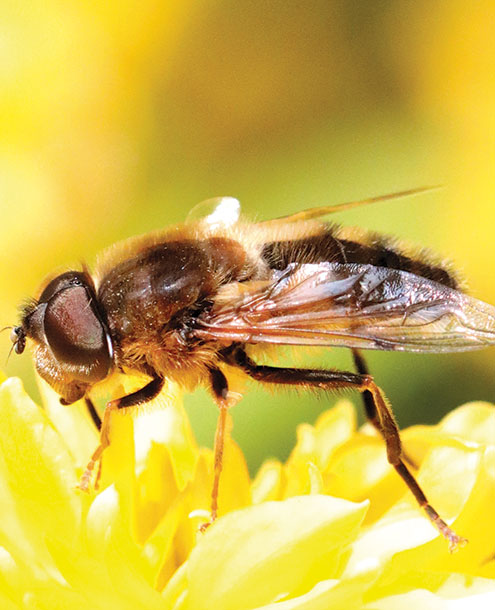
This Article From Issue
March-April 2022
Volume 110, Number 2
Page 66
Evolution by natural selection: We know that this process is how species adapt to different environments. But evolution happens over at least one generation, usually many more, whereas rapidly changing environmental conditions could cause a species to die out before it has a chance to reproduce and evolve. Indeed, species do sometimes exhibit a more rapid response to their surroundings, in a process called phenotypic plasticity, as is detailed in the cover feature, “Evolution and the Flexible Organism” by David Pfennig of the University of North Carolina at Chapel Hill. In his own research, Pfennig studies a type of tadpole whose appearance and behavior change drastically depending on the food sources it encounters. Pfennig looks at the latest research about whether and how phenotypic plasticity evolves, and how it may drive genotypic evolution.

Courtesy of Erica McAlister.
Even in a single type of organism, evolution has produced a vast array of adaptations. In “A Curator’s Tour Through Fly Collections,” Erica McAlister takes us on an exploration of the order Diptera, which includes an incredibly diverse bunch of flies (an example is at right), ranging from the beautiful to the grotesque and found almost everywhere on Earth. Collections such as the one curated by McAlister at the Natural History Museum, London, allow us to better appreciate these much maligned creatures and their role in different ecosystems. McAlister notes that there are still many species of flies waiting to be identified.
In this issue we are also pleased to have a feature article from Naomi Oreskes, geologist and historian of science at Harvard University, who is perhaps best known for her 2010 book Merchants of Doubt, which was later the subject of a documentary film. Oreskes’s latest book, Science on a Mission: American Oceanography from the Cold War to Climate Change (University of Chicago Press, 2021), focuses on the world’s oceans, and how military funding has influenced the focus of oceanographic research since World War II. The article, “Operational Oceanography,” draws on material from Oreskes’s book, but we were gratified to collaborate with her on customizing the article to focus on the work of Henry Stommel, an oceanographer at Woods Hole Oceanographic Institution. During the Cold War, Stommel worked with his colleagues to produce the first generally accepted mathematical model of deep ocean circulation. Oreskes notes that some widely perpetuated misunderstanding remains about the complexity of circulation in the deep ocean, and we worked with her on new graphics that better explain this concept.
Elsewhere in this issue, you will encounter the diversity of hummingbirds (Spotlight), bees (First Person), and even humans (Nightstand), as well as a bevy of articles on areas of science as wide-ranging as fluid dynamics (Sightings), gears (Technologue), and gambling statistics (Perspective). We hope you enjoy the variety of topics as well as the range of species in this issue. —Fenella Saunders (@FenellaSaunders)
American Scientist Comments and Discussion
To discuss our articles or comment on them, please share them and tag American Scientist on social media platforms. Here are links to our profiles on Twitter, Facebook, and LinkedIn.
If we re-share your post, we will moderate comments/discussion following our comments policy.